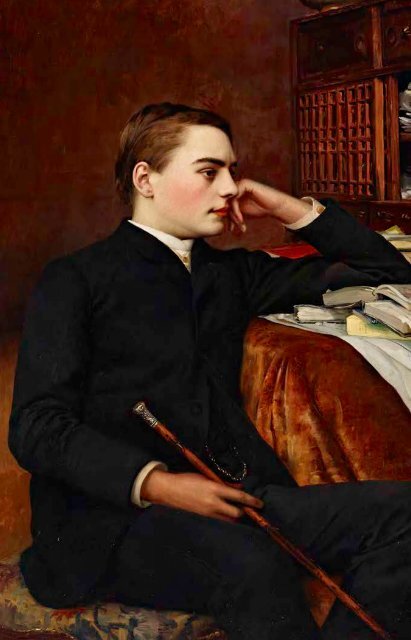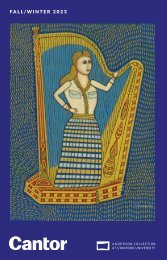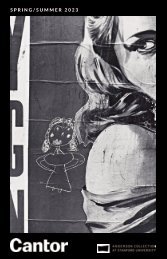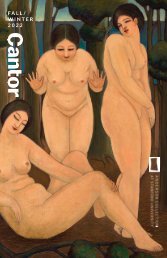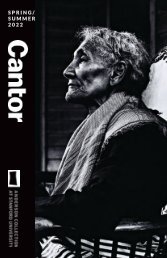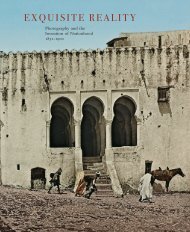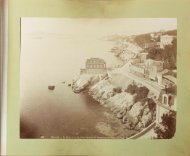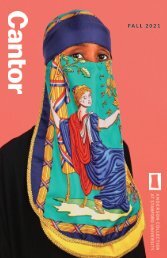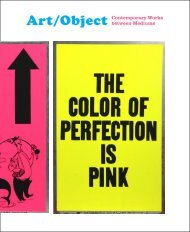Gallery Guide | The Melancholy Museum
Using over 700 items from the Stanford Family Collections, artist Mark Dion’s exhibition "The Melancholy Museum" explores how Leland Stanford Jr.’s death at age 15 led to the creation of a museum, university, and—by extension—the entire Silicon Valley.
Using over 700 items from the Stanford Family Collections, artist Mark Dion’s exhibition "The Melancholy Museum" explores how Leland Stanford Jr.’s death at age 15 led to the creation of a museum, university, and—by extension—the entire Silicon Valley.
You also want an ePaper? Increase the reach of your titles
YUMPU automatically turns print PDFs into web optimized ePapers that Google loves.
<strong>The</strong> <strong>Melancholy</strong> <strong>Museum</strong>:<br />
A Mark Dion Project<br />
SUSAN DACKERMAN<br />
John and Jill Freidenrich Director, Cantor Arts Center<br />
ALTHOUGH THE MUSEUM ESTABLISHED BY LELAND SR. AND JANE<br />
Stanford in memory of their son, Leland Jr., is celebrating its 125th<br />
anniversary this year, it has only been in active operation for a portion<br />
of that time. In the wake of the fifteen-year-old’s tragic death, his<br />
parents founded both Leland Stanford Junior University and the<br />
Leland Stanford Junior <strong>Museum</strong>, the latter of which opened in 1894<br />
and was expanded in 1900. When it was built, its grandeur and scale<br />
were rivaled only by its East Coast contemporaries—the Metropolitan<br />
<strong>Museum</strong> of Art in New York, Boston’s <strong>Museum</strong> of Fine Arts, and the<br />
Philadelphia <strong>Museum</strong> of Art. Twelve years into its life, however, the<br />
1906 San Francisco earthquake catastrophically toppled the majestic<br />
museum, and much of its collection was lost to the collapse and the<br />
looting that followed. Because Jane Stanford, the museum’s most vocal<br />
advocate, died in 1905, when it reopened in 1909 only a quarter of the<br />
former building was salvaged, and part of that space was given over to<br />
classrooms, laboratories, and storage rather than display. In 1945 the<br />
building closed for further renovations and did not reopen again until<br />
1954. During this time a much-needed inventory of the art collection<br />
was conducted, and much was determined to be lost.<br />
During that half century of the museum’s closure and instability,<br />
most other art museums across the nation were building their<br />
collections and developing their educational missions. Thus, from the<br />
1950s through the 1980s, Stanford’s museum curators and art history<br />
faculty made up for lost time, heroically working to revitalize the<br />
institution into a worthy center for exhibitions, research, and teaching.<br />
But while lightning never strikes twice, earthquakes do, and in 1989<br />
the Loma Prieta quake again critically damaged the building and its<br />
collections. <strong>The</strong> museum’s first century of existence was steeped in<br />
sorrow and destruction.<br />
Gustave-Claude-Etienne Courtois (1852–1923),<br />
Portrait of Leland Stanford Jr., 1884. Cantor Arts Center<br />
3


